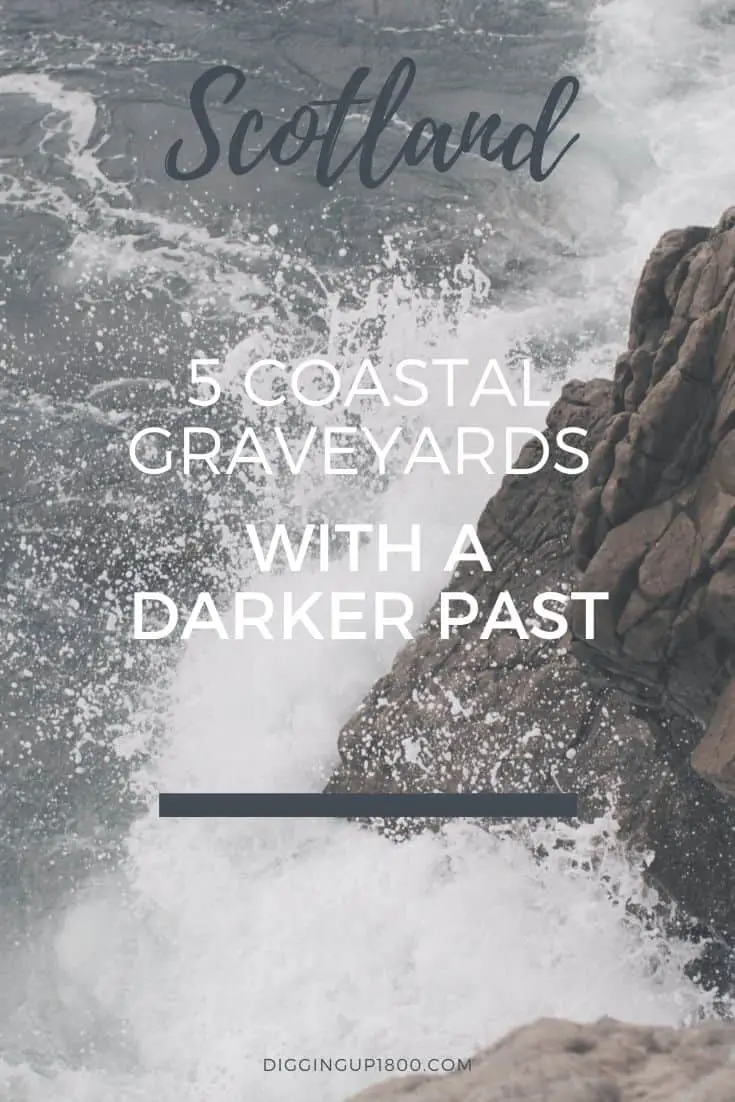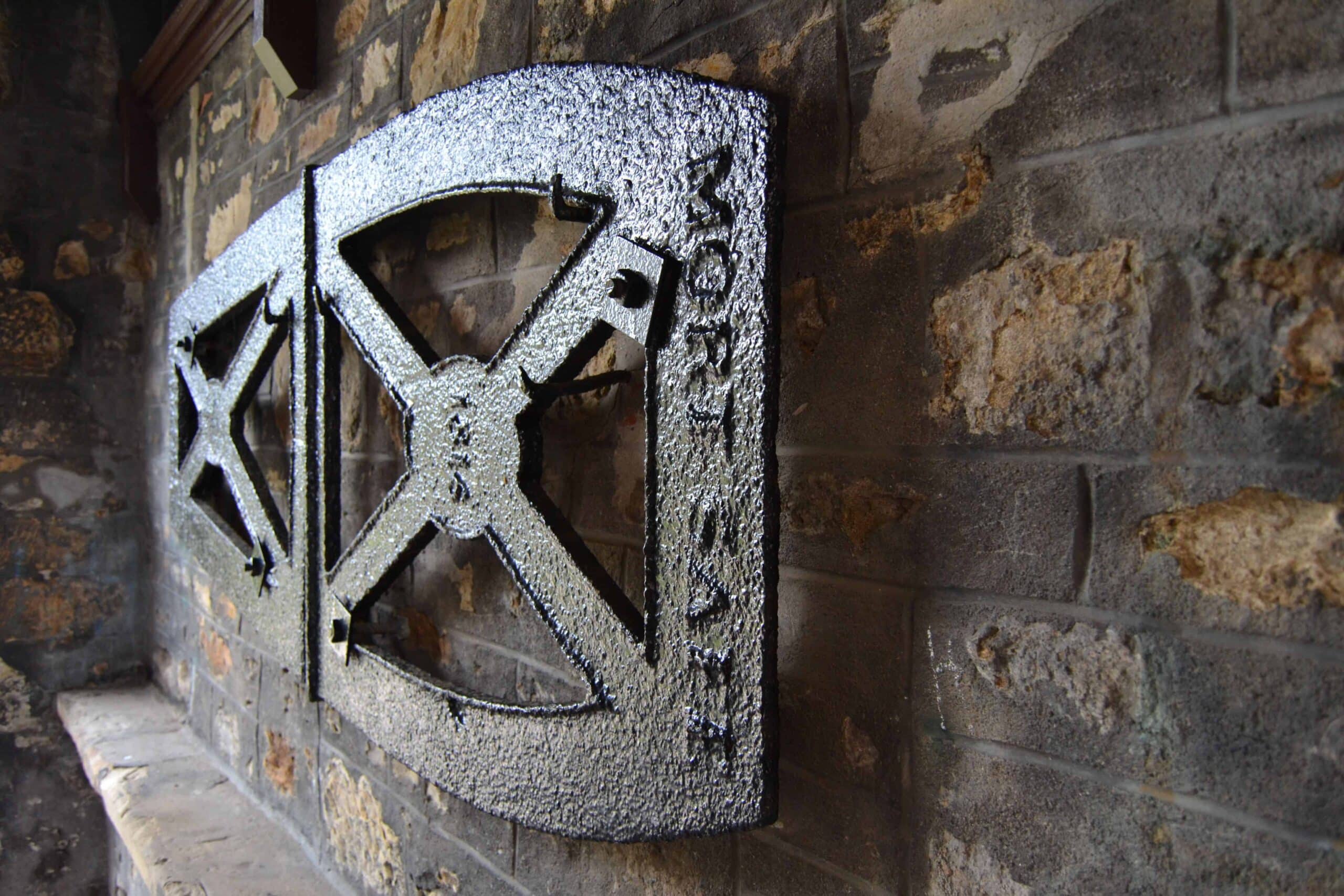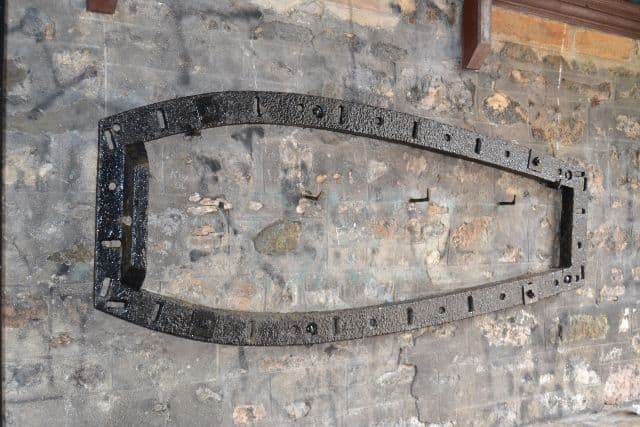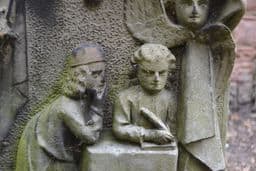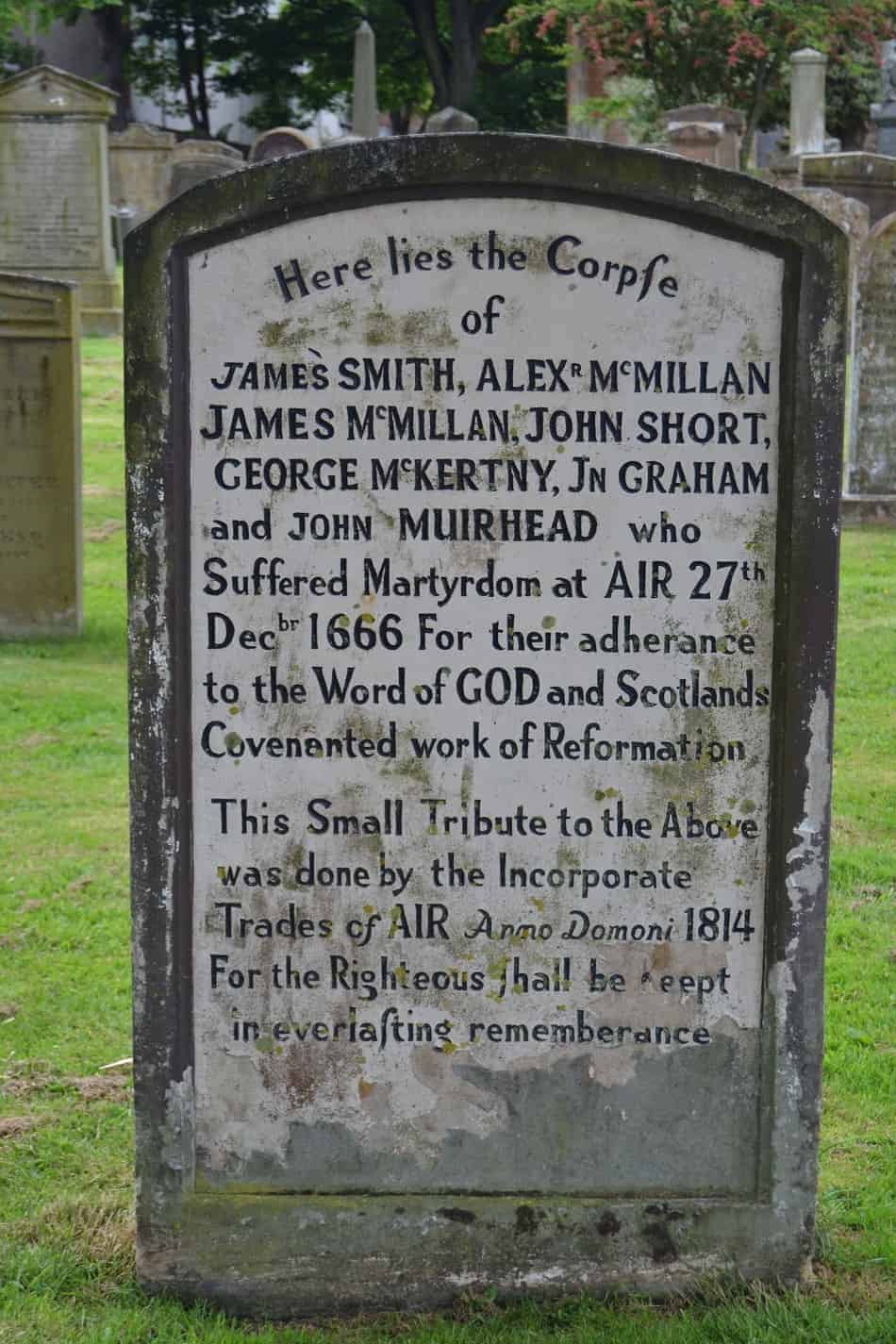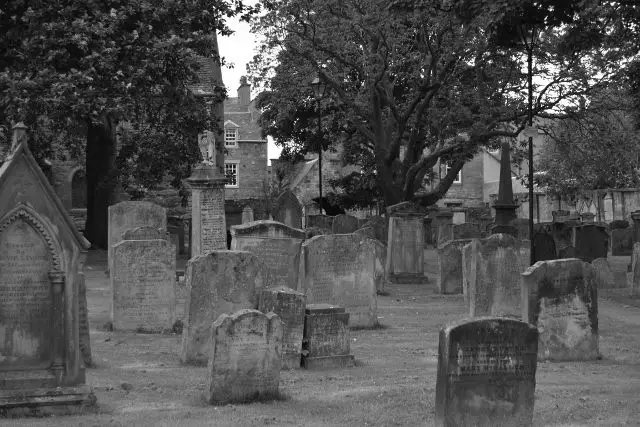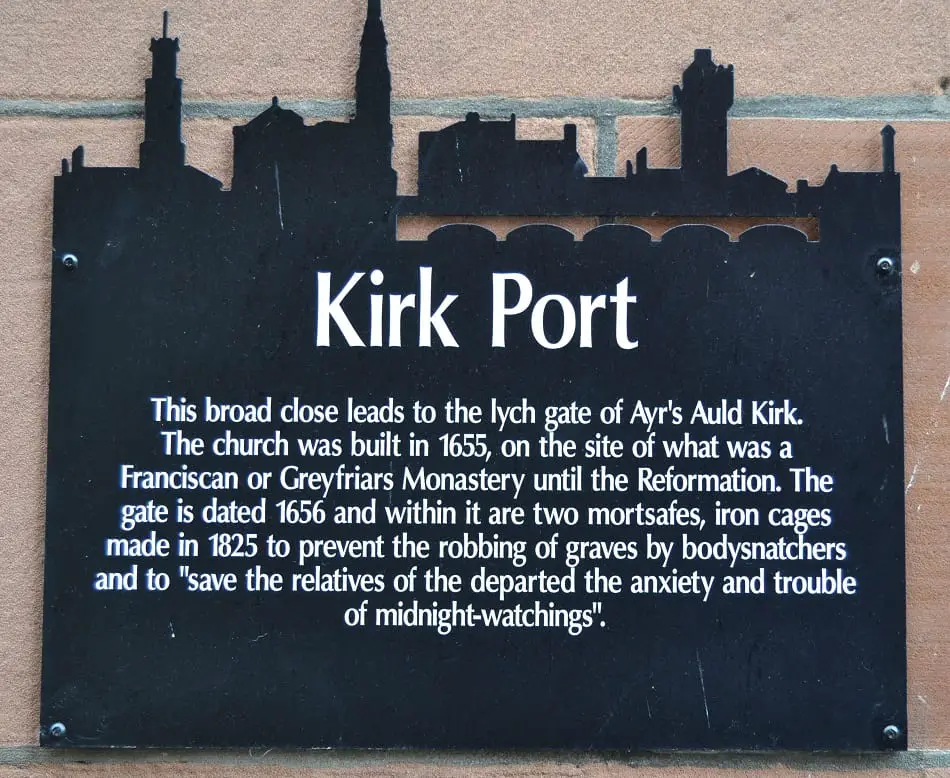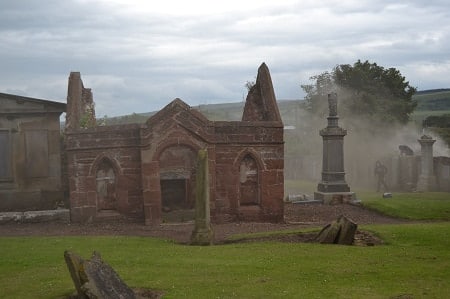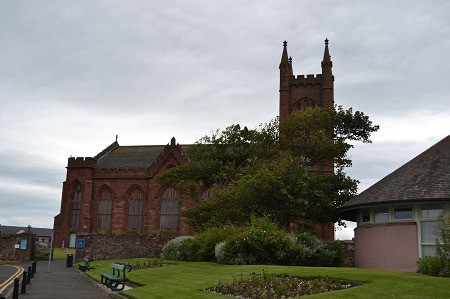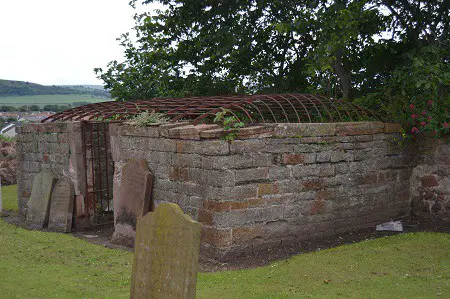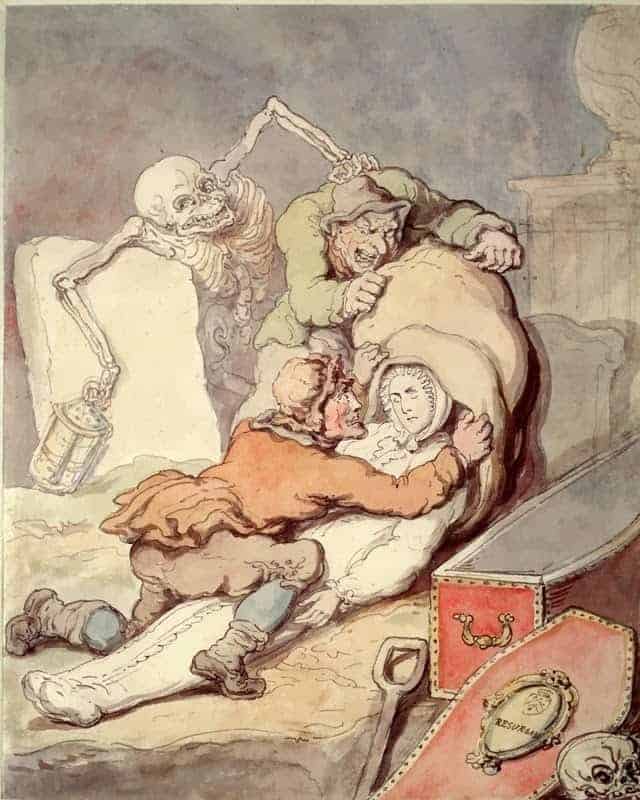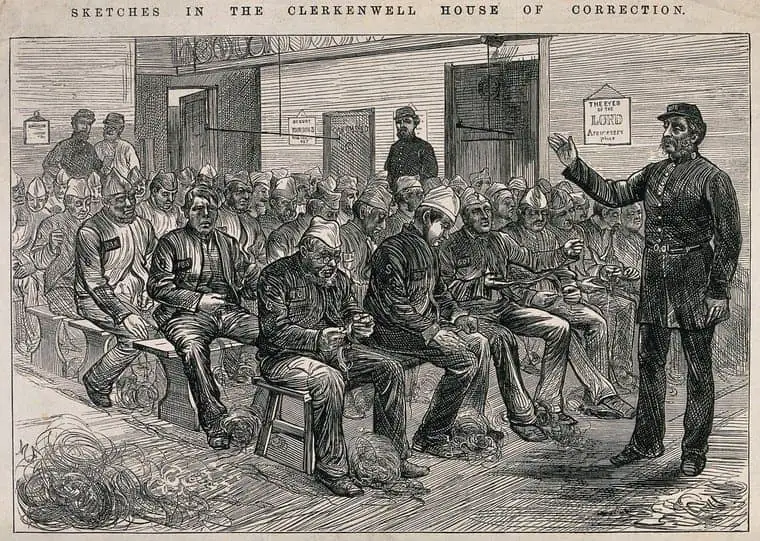5 Coastal Graveyards In Scotland With A Darker Past
Scotland certainly has some true gems when it comes to dark tourism, just think of Greyfriars Kirkyard in Edinburgh, and it’s certainly known for its macabre past – no doubt you’ve heard of the murderers’ Burke and Hare?
But if you’re like me then you’re probably obsessed with the darker side of history, and so you’ll know there’s no better place to explore than a graveyard or two. But some of Scotland’s graveyards have a darker past that at first, may not be that obvious.
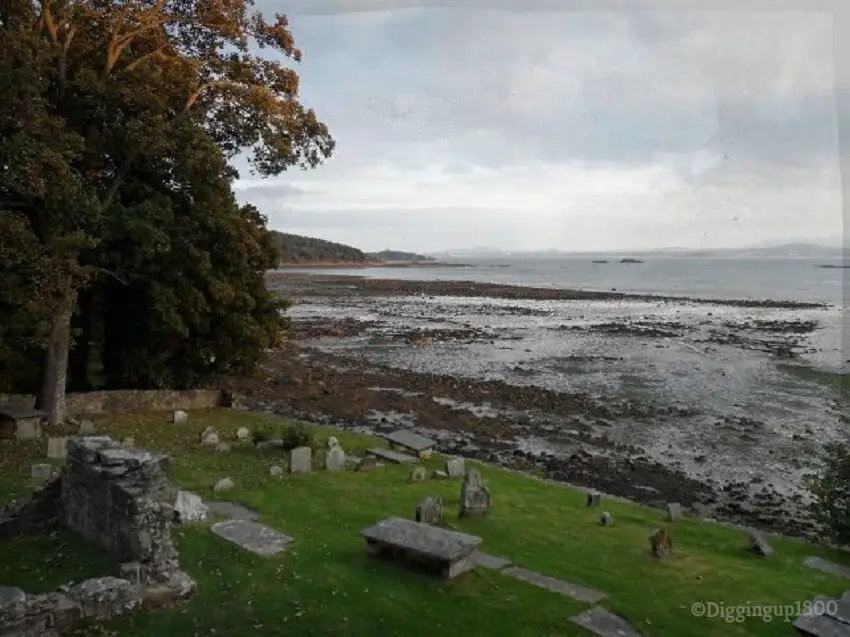
But if you’re like me then you’re probably obsessed with the darker side of history, and so you’ll know there’s no better place to explore than a graveyard or two.
But some of Scotland’s graveyards have a darker past that at first, may not be that obvious.
And while you may think that a visit isn’t worth it, I’m hoping this post gives you a few ideas off the beaten track and the urge to explore graveyards outside of Edinburgh.
In this post, I’m sharing with you my TOP FIVE hidden coastal graveyards that, at first sight, may not look anything special, but if you know me, then you’ll know they’ll all be linked with the dark art of body snatching somewhere along the line.
St Nicholas Church, Anstruther, Fife
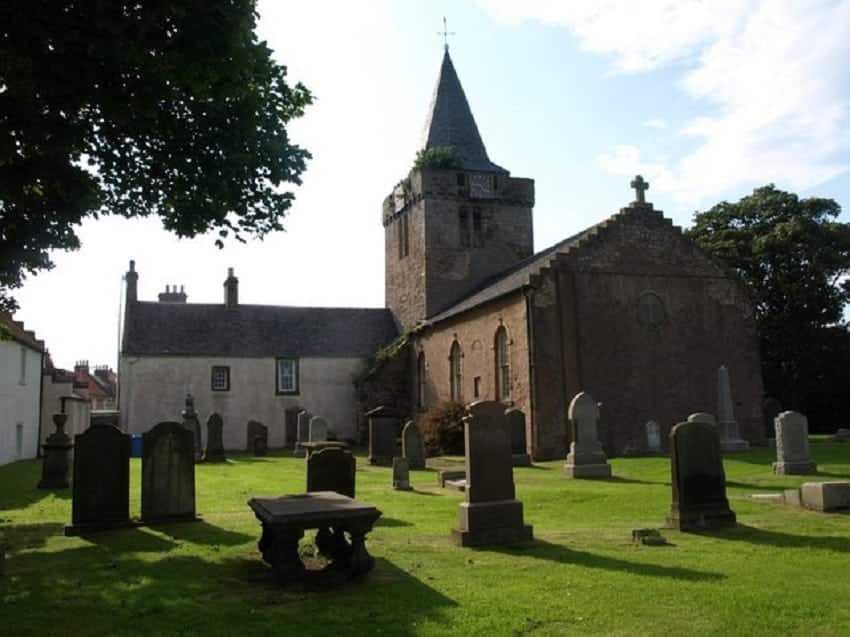
Anstruther has a great history and a pretty dark past when it comes to body snatching.
The parish invested quite liberally in mortsafes and at one point was reputed to have had a total of 7 of the things, one of them being over 7ft (2.1m) in length!
Anstruther Mortsafe Society
Anstruther shared the use of the mortsafes with the neighbouring parishes of West Anstruther and Kilrenny, each benefiting from the protection of the others when deaths in the parish outstripped availability.
Use of the mortsafe came via subscription into the Anstruther Mortsafe Society, founded quite late in 1830, which had an initial joining fee of 3d with a 6d annual subscription after that.
It’s said that nearly every person in the parish was paying into the Society at some point.
There was also a watch set up in the graveyard, where friends and family of the deceased would have watched and waited for the resurrection men to try their luck with their dead.
I’ve not found any record of a watch house though so perhaps they kept watching from windows that overlooked the graveyard.
Unfortunately, the mortsafes are no longer at the site as they were sold in 1874 as scrap metal for the grand total of £6 (the price of a cow at the time I do believe).
A Tale Of Folklore or Nothing At All?
But the site does have a story to tell, albeit one which may instead lend itself to folklore.
After a local fish-wife pulled the curtains aside in her small cottage near the church, after hearing a noise outside, it is said she witnessed a body being roughly stuffed into a sack.
And that’s it. Nothing more is said about the story, as though it was created merely in passing.
Getting There
Head towards St Andrew’s on the A915 and keep an eye out for signs to Pittenweem and Anstruther on the A917.
This one’s right on the coast and I suspect you’ll be able to pick up some fish and chips if all this touring has got you hungry.
The Auld Kirk, Ayr, Ayrshire
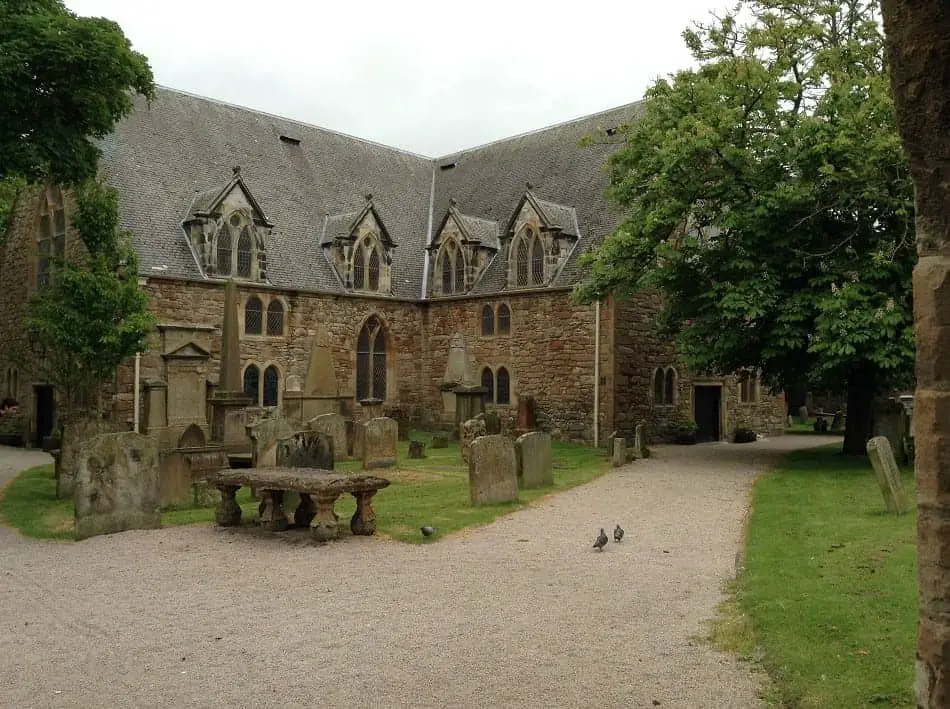
Think of a macabre Scotland and the West Coast isn’t often the first place that springs to mind but the Auld Kirk in the centre of Ayr, holds a few secrets up its sleeve, and dating back to the mid 17th Century (the church was built between 1654 and 1656), that’s hardly surprising.
Walk through the mid-seventeenth century lychgate (dated 1656) and you’ll see two mortsafes proudly displayed on its walls indicating a strong link to the site’s turbulent past.
Look closely and you can still see the date of 1816 emblazoned on the front of one and the words ‘Mortsafe’ stamped on the top of the frame on the left-hand wall as you walk under the eaves.
It’s the type of mortsafe that could have clamped around the coffin itself, being removed after six weeks, making it available for the other parishioners.
A Body Snatching Tale, But Not For Ayr
Unfortunately, I’ve found it difficult to pin down a specific body snatching case that occurred in the kirkyard itself, all tales of this macabre practice have tenuous links instead to this location’s darker past.
Take for example the cadavers that were discovered when they arrived in barrels at the docks in Stranraer, thought to have been shipped in from Ireland.
They were en-route to their final destination in Glasgow, all labelled up for a surgeon when the nauseating smell of death alerted workers to the contents.
The cadavers were given a temporary home in a building in the town, only to be stolen later that night, presumably by the body snatcher who was acting as an intermediary to the surgeon in Glasgow.
No direct links to the Auld Kirk in Ayr, but a good tale nonetheless.
The Killing Times
Go back to the present Kirk’s beginnings and there are links at Ayr to the ‘Killing Times’ – when men and women were hunted down, heavily fined and brutally killed if they were seen to support the established religion in Scotland, and had signed Scotland’s National Covenant.
Ayr would become one of many towns where courts were established to hunt out the guilty, making an example of those found to be in support of the Covenant.
Here eight men were tried and sentenced to death by hanging, but in the end, only seven would meet their end on the end of the hangman’s noose.
When the appointed time came, none of the local hangmen would perform the task. Instead, it was suggested that one of the eight men would be pardoned if they volunteered to hang his seven comrades.
After much deliberation, and what one can only presume to have been a very heavy conscience, Cornelius Anderson stepped forward to perform the task.
There is a tribute to the seven men who were hung that day, and the verse from the gravestone, transcribed and made available on the church’s website reads as follows:
Here lie seven Martyrs for our Covenants, A sacred number of triumphant Saints, Pontius McAdam the unjust Sentence past, What is his own the world will know at last, And Herod Drummond caus’d their Heads affix, Heav’n keeps a record of the sixty-six. Boots, thumbkins, gibbets were in fashion then, LORD, let us never see such Days again.
I didn’t know until reading this that these seven men had their heads and hands removed and that these were placed throughout the town as a warning to others.
If you’d like a more in-depth read of the ‘Killing Times’ and the history of the fabric of St John The Baptist, then I highly recommend visiting the churches website auldkirk.org
Getting There
Ayr is on the West Coast of Scotland, with the town itself being on the banks of the River Ayr. It’s within easy driving distance of most towns, including Glasgow, with the main inroads being the A77 and A70.
Once in the town itself, keep an eye out for the turning down Blackfriars Walk to the Kirk.
Prestongrange Parish Church, Midlothian
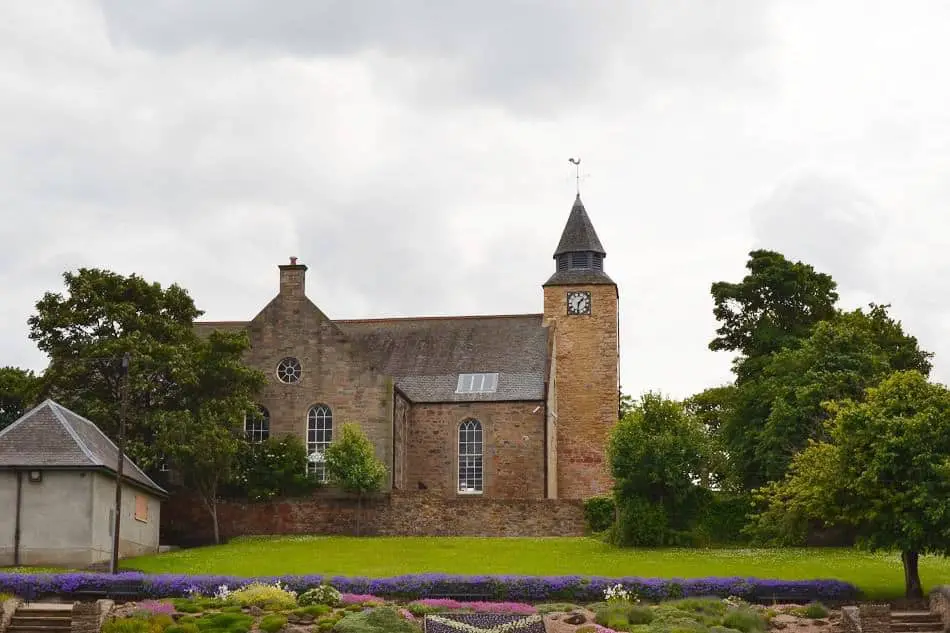
You’re in for a treat if you visit this site for not only does it have links to body snatching but it also has some outstanding memento mori, some dating to 1633.
The church you’ll see today dates from 1774, the original church had burnt down over two hundred years previously, but for me, it’s the watch house that holds the interest here.
One sad tale that was to play out in the kirkyard at Prestonpans occurred in February 1832, the exact same year that ‘King Cholera’ was rampaging through the country.
With only a few months left of the ‘dissecting season’, the period when the freshness of a cadaver could be guaranteed for a little longer than the warmer summer months, the two unidentified body snatchers stole past the watch house and entered the kirkyard in the dead of night.
By all accounts, the men were local, for one of the body snatchers had recently buried his own mother in the exact same kirkyard in which they were now standing.
The poor woman had died of cholera, a feared disease causing much distress to the inhabitants of Prestonpans.
Picking The Wrong Grave
Her grave was located right next to that of the one they’d come to target and wasting no time, the pair soon got down to work. It wasn’t long however before they realised their mistake.
It doesn’t take a genius to guess the next bit of the story. The novice body snatchers had dug up the wrong cadaver and had already handled the cold clammy skin of a cholera ravaged body. But it was too late.
Leaving the site exactly as they found it, the pair retreated back to their lodgings where they were both gripped with the disease and died overnight.
Folklore has it that they were buried alongside the corpse that they were trying to snatch. A tall tale but one that brings the site of Prestonpans to life.
Before heading away to explore some more, take a wander around this site and look at the gravestones.
Many have skulls, crossed-bones and hourglasses, all perfect examples of memento mori. Just make sure you don’t miss the ones that can be found on the outer walls of the watch house.
Getting There
Head into Prestonpans on the B1348 off the A1. I parked at the bottom of the bank for this site and walked up the steps that led round the wall and then into the kirk.
You get into the graveyard via a gate right next to the watch house, so you shouldn’t miss it.
St Bridget’s Kirk, Dalgety Bay, Fife
Based on the banks of the mighty Firth of Forth, and at the head of Dalgety Bay lies St Bridget’s Kirk, a site is truly a magical location.
Unfortunately, the kirk is now a ruin but there’s still plenty to see here, including a wee watch house incorporated into the boundary wall.
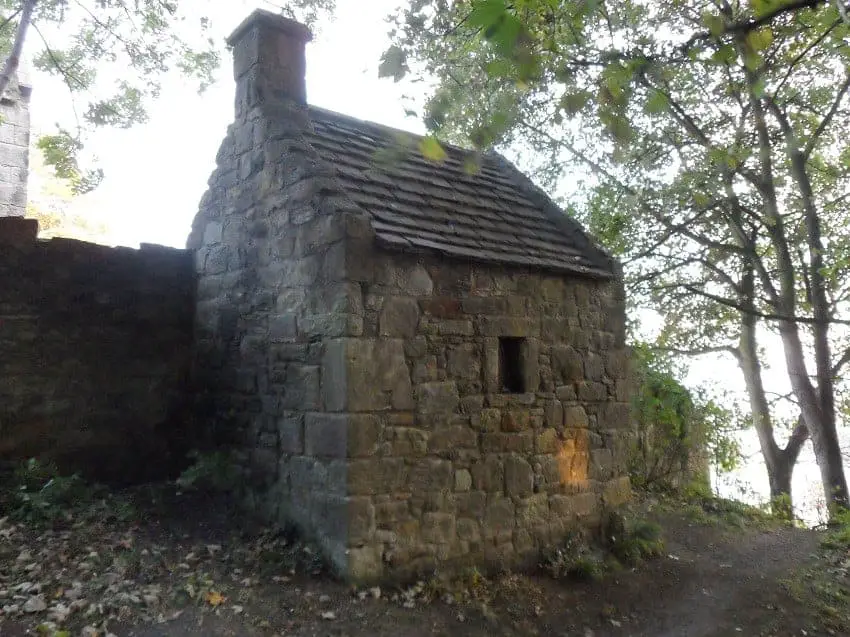
The watch house here is of a simple design, the fact that the window is directed across the woodland rather than the foreshore shows that the inhabitants didn’t feel that the threat to their dead was going to come via the sea.
It is from this site that cadavers would be rowed across the water to the banks on the opposite side and hurried through the streets en- route to the anatomy school of Edinburgh. A perilous journey by the sounds of things.
The watchmen, obviously in the pay of the body snatchers, would signal across the water when a fresh corpse was ready.
The corpse would then be bundled up, its hands and feet tied together with rope and stuffed into a sack ready for when the boat rowed ashore.
The inhabitants of Dalgety Bay had all but departed by 1830 (including some of the inhabitants from the graveyard!) and once the church was no longer used for worship, its roof was removed and the site started to fall into disrepair.
The village itself would have disappeared only six years later.
You can still wander up to the upper stories of the church, which were used by more prominent members of the parish. At least you could during my last visit, although please don’t set your heart on it during your own visit, as things do change.
Make sure you stop for a moment to admire the gravestones at this site, including a large number of table tombs which tend to dominate the shoreline.
Getting There
The Kirk itself is only 2miles (3.2km) from the town of Aberdour, just off the A921.
The Historic Environment Scotland website has a useful link on getting to St Bridget’s Kirk if you want to see the location on a map.
The Parish Church, Dunbar, East Lothian
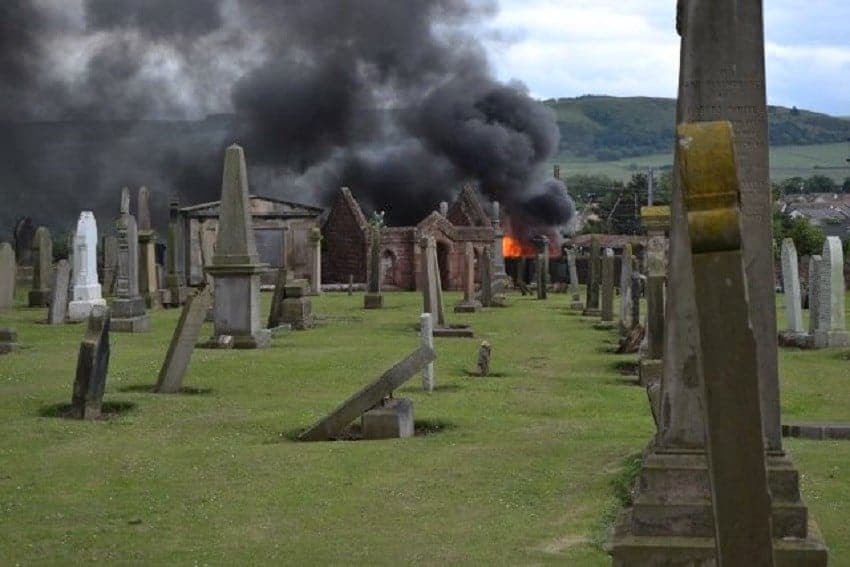
The last time I went to Dunbar it was on fire!
Well, there was a bonfire that had got slightly out of hand on the land behind the site and it certainly made for a dramatic backdrop I can tell you.
Lying around 30 miles (48km) outside of Edinburgh, the church that you see today was built between 1819-1821 (opening in April of that year) which is right in the middle of the body snatching era!
You’re going to be seeing two types of body snatching prevention at this site – a caged lair and a watch house, both of which are easy to walk past if you don’t know they’re there.
After you’ve finished admiring the view of the North Sea as you walk up the path into the kirkyard, the first of these structures can be seen on your right, just a little past the main entrance.
The caged lair is the first of the anti -body snatching prevention that you’ll see on this site and it has a slightly domed iron-bar roof along with an iron gate.
Being drastically outside of the price range for poorer members of the parish, a caged lair would have been the final ‘secure’ resting place for the wealthier inhabitants.
On first inspection, it looks like an old mausoleum and there are some inscriptions to view inside, but once you know the history of the site, then it soon becomes apparent as to the use of this structure.
The watch house lies along the nearby wall and at first, can be hard to distinguish.
There is a small fireplace inside which would have been welcome on a cold winter’s night when the whisky was flowing and the threat of a visit from the resurrection men hung in the air.
In 1820 the population of Dunbar was just 5200 and not one of them seemed to be aware that resurrection men were active in the area until 1819, the same year that the new church was under construction.
Word had reached the parish that snatching of a female cadaver had taken place in Prestonkirk, a mere 6 miles (9.6km) away.
Whether it was fear and terror of the resurrectionists being in the vicinity that drove the inhabitants of Dunbar to build a watch house we may never know but one was certainly built and used, although I still have to find a body snatching case specific to the site.
Getting There
Dunbar is really easy to find if you follow the signs from the A1 and then for the A1087.
There are two churches in Dunbar and this one is located on Queens Road.
Like This Post? Why Not Pin For Later?

